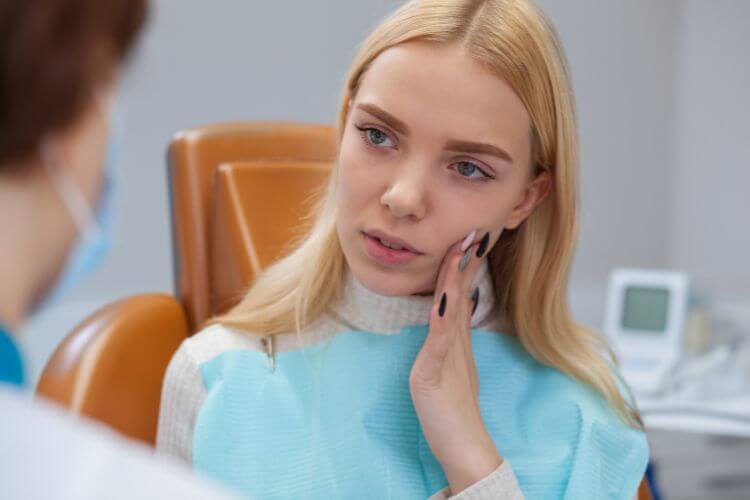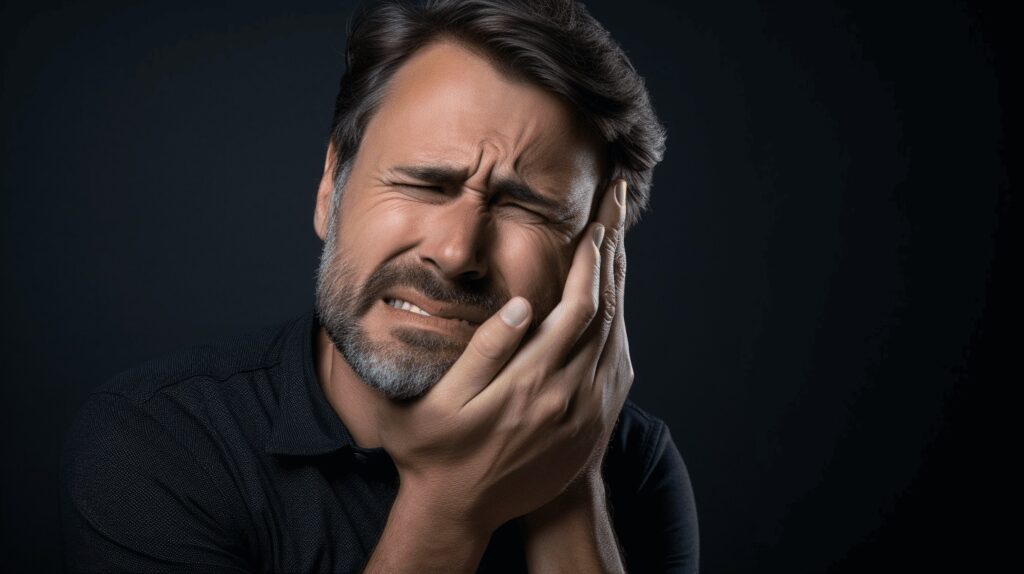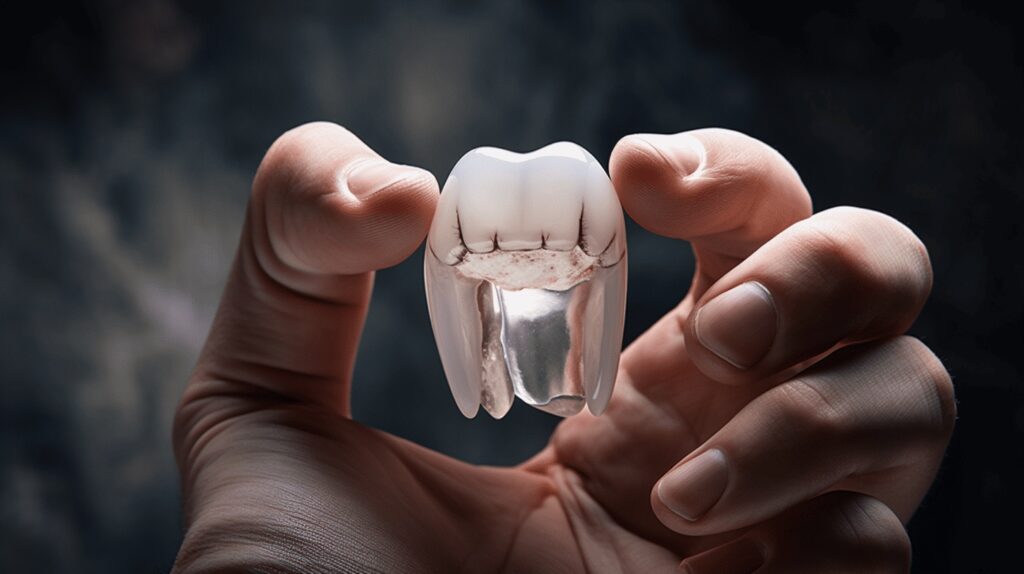Welcome to mastering the art of handling dental emergencies in real time Handling A Dental Emergency. Our smile, a universal language in its own right, is one of the first things people notice about us. However, there is more to a healthy radiant smile than just aesthetics. Your dental health plays a critical role in maintaining your overall well-being, and therefore, knowing how to handle dental emergencies is absolutely essential.
Imagine being in an intense football game when a sudden blow to a teammate’s mouth leads to a chipped tooth, or you are relishing a popcorn-filled movie night and an excruciating pain strikes out of the blue due to a tooth abscess. Dental emergencies like these are common and can occur at the most unexpected times.
Understanding what dental emergencies are, how to prepare for them, and manage them effectively can make the difference between a temporary inconvenience and long-lasting damage. Armed with the right tools, training, and mindset, you can turn an unpleasant dental incident into a manageable situation, all the while ensuring minimal impact on overall dental health.
So, let us embark on this enriching journey of preparing for and handling dental emergencies. We’ll cover everything from definitions and types of emergencies to practical clinical skills, as well as the role regular dental care plays in preventing these emergencies. We’ll also dive into exciting technological advancements that are revolutionizing emergency dental care.
Let’s get ready to save smiles and uphold dental health like never before!
Table of Contents
Understanding Dental Emergencies
We’ve all been there – you’re enjoying your favorite sweet treat, and suddenly a sharp pain radiates from your tooth. Or you’re innocently playing a round of pickup basketball when an errant elbow meets your mouth. In times like these, understanding what constitutes a dental emergency can make all the difference.
Handling A Dental Emergency – Defining Dental Emergencies
To put it simply, a dental emergency refers to any situation involving the mouth, teeth, and associated tissues that requires immediate medical attention. But not all dental issues count as emergencies! So hold off on rushing to the dentist the second you detect a little tooth sensitivity from your morning coffee. 😄 Dental emergencies often come with symptoms like severe pain, swelling, or noticeable damage to your teeth or mouth.
Still, it’s essential not to downplay any dental issues you’re experiencing. Even if you think it’s not an ’emergency’, per se, it could be indicative of a larger problem if left untreated. It’s always better to be safe rather than sorry!
Common Types of Dental Emergencies
When it comes to identifying dental emergencies, here are some common ones to look out for:
- Toothaches: Persistent or severe toothaches are usually indicative of more serious underlying issues. It’s time for immediate action when a regular toothache escalates to unbearable pain.
- Loose or missing teeth: Adult teeth are not meant to be loose. If you find that one of your teeth is moving around in its socket, or worse, has fallen out, that’s considered an emergency.
- Bleeding gums: While a small amount of blood after flossing might not be serious, extensive or persistent bleeding from the gums needs immediate attention.
- Swelling in the jaw area: Any swelling in the jaw can be a sign of a serious infection. If you’re experiencing severe pain along with the swelling, it’s certainly a dental emergency.
- Injuries to the mouth: Any significant injuries, namely cuts, punctures, or lacerations to the lips, cheeks, mouth, and tongue, are considered emergencies.
Remember, the best defense against dental emergencies is good oral hygiene and regular check-ups. But in the event of an emergency, knowing these common problems can help you make a quick and informed decision.
When it comes to our dental health, there’s no such thing as being too careful. So let’s make sure we’re equipped with the knowledge to recognize potential emergencies—because a smile in pain is never a good thing. 🦷💛
Handling A Dental Emergency – Preparation for Dental Emergencies
Let’s get real; dental emergencies can occur anytime, anywhere. And, when they strike, the pain can be excruciating. Therefore, being prepared for such unexpected situations is a wise move, and we’re here to help guide you on this path. This section of the article will focus on two essential aspects: Essential Dental Emergency Tools and Skills and Procedures Training.
Essential Dental Emergency Tools
In the case of a dental emergency, having the right tools at your disposal can quite literally mean the difference between relief and prolonged agonizing pain. But you don’t need a fully-equipped dental clinic; just a few essentials will do the job:
- Dental First Aid Kit: Trust us when we say this is an absolute game-changer. This kit should include items such as dental floss, a small flashlight, a dental mirror, gauze, a small container with a lid, and perhaps most importantly, a set of dental-grade tweezers. 🦷💼
- Temporary Cement: Losing a crown or a filling can be painful. A high-quality temporary cement can provide instant relief and hold things together until a visit to the dentist becomes feasible.
- Painkillers: Having a bottle of over-the-counter painkillers can ease the discomfort until professional help is available. Here, we’d recommend ibuprofen, as it not only relieves pain but also significantly reduces inflammation.
Skills and Procedures Training
Equipped with the best tools in the world, but without adequate skills, you’re in as much of a fix as you were originally. Our aim is to make you self-reliant to an extent, capable enough to handle small accidents like losing a crown, a broken brace, or a minor toothache. Much like one undergoes a basic first-aid course, having elementary knowledge of dental care and emergency protocols can be empowering. It’s not complicated – it just requires a bit of practice and the right guidance.
Knowing how to handle a dislodged tooth can save that precious smile. Understanding the steps to sterilizing your mouth after a dental injury can prevent serious infections. Learning to apply temporary cement correctly could save you from endless hours of unnecessary suffering.
Stick with us as we delve into these topics in further detail, and before you know it, you’ll be well prepared for these dental hurdles. Remember, it’s all about being ready – dental emergencies won’t wait for anyone, but with the right preparation, they can certainly be managed better. Here’s to healthier smiles and minimal dental discomfort! 🍻
Handling Real-Time Dental Emergencies
In the unpredictable world of dentistry, amicable chats about weekend plans can effortlessly transform into urgent situations needing immediate intervention 😲. When tooth troubles strike without warning, time indeed becomes of the essence. Today, we want to shine a light on the steps involved in handling real-time dental emergencies—from initial patient assessment through to aftercare—and how we, as dental practitioners, can ensure we’re prepared for anything the appointment diary throws our way.
Initial Patient Assessment
The primary step in any dental emergency is the initial patient assessment. This isn’t a two-minute glance at their dental history but an all-encompassing overview that considers:
- Patient’s pain level: Understanding the type and intensity of pain can reveal a lot about the underlying issue.
- Visible symptoms: Swelling, bleeding, or discoloration can act as a guiding star, leading us in the right direction.
- Patient’s medical and dental history: A thorough read-through can provide indispensable insights into potential complications.
- Radiographic examination: Nothing conceals from an X-ray’s discerning eye. It helps us map out the road to recovery, ensuring no hidden problems lurk beneath the surface.
Think of the initial assessment as a detective story, where every piece of evidence—no matter how insignificant it may seem—has the potential to solve the case.
Implementing Corrective Measures
Once you’ve unfolded the mystery of what’s causing the discomfort, the next step of our adventure takes us into the realm of restorative procedures 🛠️. Depending on the emergency, this could encompass anything from a simple prescription of painkillers to a more complex endodontic treatment. Regardless of the procedure:
- Always keep the patient informed: No one likes surprises, especially in a dental chair. A well-informed patient is an ally.
- Adopt minimally invasive approaches: Whenever possible, opt for procedures that will ensure quick recovery and minimal discomfort.
- Don’t rush: Yes, it’s an emergency, but quality care triumphs over rushed efforts every time.
As dental practitioners, it’s our duty to skillfully navigate through an array of potential solutions and find the most fitting path to relief for each unique case.
Patient Comfort and Aftercare
The secret to successful dental emergency handling doesn’t end with the procedure—the aftercare is just as critical. Providing personalized advice on post-procedure care, arranging for follow-ups, and ensuring the patient understands what to expect during recovery are crucial threads in the fabric of comprehensive dental care 🩹.
Comfort plays a massive role here. A soothing environment, empathetic communication, and a gentle touch can transform a traumatic experience into a tolerable event, building trust in the process.
In summary, real-time dental emergencies require a skillful blend of swift action, gentle care, and professional competence. With the patient at the heart of our practice, we can arm ourselves against any surprises and deliver exceptional outcomes under pressure.
The Role of Regular Dental Care in Avoiding Emergencies
In the journey towards achieving great oral health, a key station we often overlook is regular dental care. Like the old adage, “an ounce of prevention is worth a pound of cure,” the importance of preventive dental care cannot be overstated. Just as routine maintenance prevents your car from breaking down unexpectedly, regular dental checkups protect your teeth from sudden complications 🛡️.
Brushing, Flossing, and Regular Check-ups
The foundation of regular oral care lies in routine activities such as:
- Brushing your teeth twice daily with fluoride toothpaste
- Flossing to remove food particles that brushing can’t reach
- Regular dental check-ups to diagnose and treat potential issues early
However, the true essence of regular dental care extends beyond these everyday acts. It involves living a healthy lifestyle, a balanced diet, limiting sugar intake, and avoiding tobacco.
Handling A Dental Emergency – Healthy Habits for a Healthy Smile
Maintaining a healthy lifestyle and mindfully responding to your body’s needs are essential to oral health. Here are some tips we recommend:
- Hydrate frequently: Saliva plays a crucial role in maintaining oral health by neutralizing acids and washing away food debris. Dehydration can cause dry mouth—a condition that could lead to tooth decay and gum disease.
- Mind your diet: Nutrient-rich foods promote gum health, so ensure you’re getting a generous dose of vitamins A and C plus Omega-3 fatty acids!
Overlooked Subtleties of Regular Dental Care
Sometimes, it’s the subtleties in your routine that can cause significant damage in the long run. To safeguard optimal oral health:
- Do not brush too hard: Vigorous brushing can hurt your gums and even erode your tooth enamel.
- Stay mindful of teeth grinding: Many of us unconsciously grind our teeth in our sleep – a deleterious habit known as bruxism.
As Benjamin Franklin rightly said, “An ounce of prevention is worth a pound of cure.” This surely rings true even in oral health. By practicing regular dental care, we can keep dental emergencies at bay and ensure our smiles stay beautiful. After all, every dentist’s mission is to keep that beautiful smile on your face gleaming always! 😊⛑️
Technological Advancements for Dental Emergencies
Dental emergencies are no laughing matter! 😬 Whether it’s a painful chip or a total tooth extinction because of that stubborn caramel popcorn, an unexpected dental event can quickly transform from a minor inconvenience to a major calamity. Thankfully, modern technology has revolutionized the way we handle these hiccups in oral health. From improvements in diagnostic tools to advancements in patient assessment and care, we can now mitigate the pain and trauma associated with dental emergencies quite effectively. 🧭💪
Handling A Dental Emergency – Modern Dental Emergency Tools
Gone are those dreadful days when a visit to the dentist would invariably mean a date with the dreadful drill! Today’s dental tools are not just advanced; they are also designed to optimize patient comfort.
- Digital X-rays: These offer a higher level of precision and emit 90% less radiation than conventional X-rays.
- Intraoral Camera: Provides a detailed view of the mouth and helps dentists identify issues that might be missed during a regular examination.
- Air Abrasion and Hard Tissue Lasers: A preferred alternative to the traditional drill, these tools remove decay with minimal pain and vibration.
With such tech-savvy equipment in a dentist’s armory, it’s safe to say that managing dental emergencies has become a less daunting task than ever before! 🎉
Advancements in Patient Assessment and Care
Technology isn’t just reshaping the tools we use; it’s revolutionizing the entire patient care journey. The introduction of AI-assisted diagnosis and teledentistry, for instance, has transformed the assessment and treatment of dental emergencies.
- AI algorithms can analyze large volumes of data, improving diagnostic accuracy and predicting possible emergencies.
- Teledentistry allows patients to receive virtual consultations and essential advice, minimizing hospital visits and unnecessary exposure.
Moreover, there’s 3D printing – a groundbreaking technology that can produce customized replacement teeth, bridges, and crowns in a single appointment!
In this era of rapid technological advancements, coping with dental emergencies has become significantly less challenging and stressful. So the next time you find yourself battling a sudden toothache or other dental dilemma, fear not! Innovation is here to save the day (and your smile!) 😉
Concluding Thoughts on Mastery of Dental Emergency Handling
The key to being a great emergency dental service isn’t only about having an adept team of professionals and the latest technologies, but also about overarching patient care and proactive avoidance measures.
Here at Wilshire Smile Studio, we believe that mastering the art of handling dental emergencies demands a comprehensive understanding of emergencies, advanced training in latest corrective measures, and an unwavering commitment to patient comfort and aftercare. After all, your smile is our ultimate badge of honor!
Our clinicians and support staff are well-trained for these vital responsibilities handling a dental emergency. With an array of dental emergencies that could happen at any time, we ensure to be on standby at any moment to provide appropriate and timely interventions. Plus, our technological sophistication helps in patient assessment and delivering optimal care.
- Full understanding of different types of dental emergencies
- Preparedness with advanced tools and equipment
- Rapid response and skilful implementation of corrective measures
- Unmatched dedication to patient comfort and aftercare
All these tie back to the essence of our service at Wilshire Smile Studio which is – ‘Making you smile brighter with every emergency dialed down’.
Remember – even vigilance and regular dental care can save you from many sudden emergencies. Always keep our advice at heart, entrust your dental health in our hands, and keep smiling. Even when the unexpected life situations throw you a ‘dental curveball’. We’re always here for you, ready to turn frowns into glowing smiles in any situation handling a dental emergency.
Book your free consultation with us online or call (323) DENTIST (323-336-8478) today.
Frequently Asked Questions
1. What are some common dental emergencies that require immediate attention?
Some common dental emergencies that require immediate attention include severe toothaches, knocked-out teeth, broken or chipped teeth, abscesses or infections, and objects stuck between teeth.
2. What should I do if I have a dental emergency outside of regular office hours?
If you have a dental emergency outside of regular office hours, you should contact an emergency dental clinic or call your dentist’s emergency contact number. They will provide guidance and arrange for prompt treatment.
3. How should I handle a knocked-out tooth?
To handle a knocked-out tooth, carefully pick it up by the crown (not the root), rinse it with water (if dirty), place it back into the socket if possible, and hold it in place. If it can’t be reinserted, keep it moist in milk or a tooth preservation kit until you can see a dentist.
4. What should I do in case of severe toothache?
In case of a severe toothache, rinse your mouth with warm saltwater to clean it. Gently floss around the affected tooth to remove any food debris that might be causing the pain. Contact your dentist for an appointment as soon as possible.
5. Are there any preventive measures to avoid dental emergencies?
While some dental emergencies might be unavoidable, you can take preventive measures to reduce the risk. These include maintaining good oral hygiene, wearing a mouthguard during sports activities, avoiding chewing on hard objects. And scheduling regular dental check-ups.









